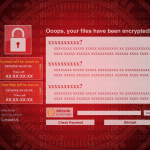Wikipedia defines an internet troll as “a person who posts inflammatory, insincere, digressive, extraneous, or off-topic messages in an online community, with the intent of provoking readers into displaying emotional responses, or manipulating others’ perception.” Now, as bad as that may sound, it is nothing compared to a ransomware infection that also bears the “Troll” moniker.
TROLL Ransomware can wreak havoc on your PC, and it does not seem to belong to any of the existing ransomware families. TROLL Ransomware seems to be spreading via fake software updates, infected pirated copies of popular software, and spam email campaigns with infected attachments. Once TROLL Ransomware successfully gains access to a targeted system, it locates the files it was programmed to encrypt. Then, the ransomware encrypts files and alters their extensions.
TROLL Ransomware received its name because of the ‘.TROLL’ extension it adds at the end of every encrypted file. The TROLL Ransomware ransom note is titled ‘HOW TO BACK YOUR FILES.txt.’ Like many other ransomware strains, the hackers behind Troll Ransomware offer the victim to unlock a few files for free to convince them that they can unlock all the affected files. The hackers also warn users against decrypting the files themselves, claiming it would damage the data beyond repair. The hackers can be reached via the email ‘Zoye1596@msgden.net.’
How Do I Deal With a Troll Ransomware Attack?
Although it may seem that the easiest thing in a ransomware attack is to pay, we strongly advise you to keep your distance from cybercriminals like the ones behind TROLL Ransomware. Instead, you should look into installing a reputable anti-malware application and use it to scan for and remove elements associated with TROLL Ransomware.




